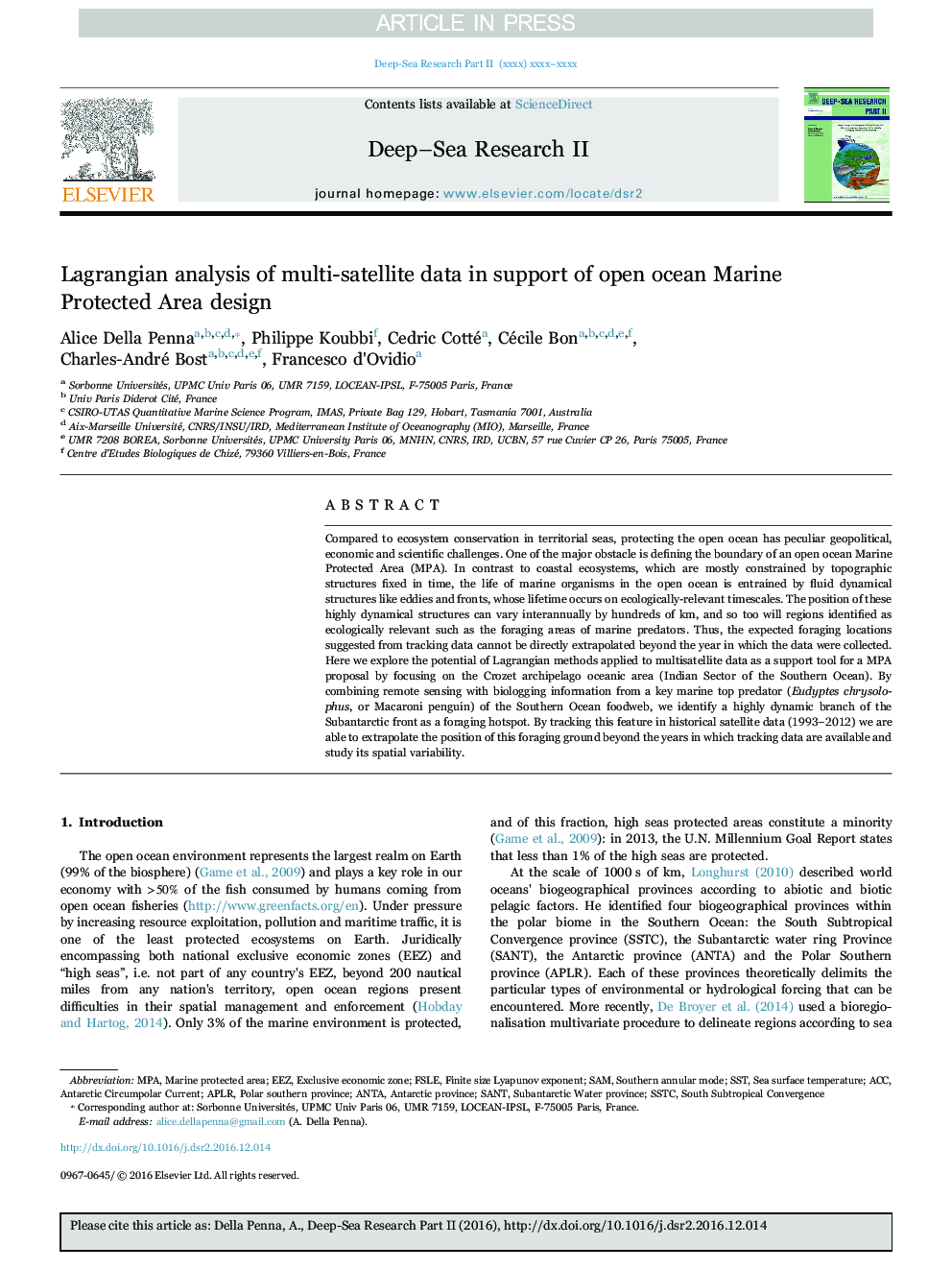| Article ID | Journal | Published Year | Pages | File Type |
|---|---|---|---|---|
| 5764965 | Deep Sea Research Part II: Topical Studies in Oceanography | 2017 | 10 Pages |
Abstract
Compared to ecosystem conservation in territorial seas, protecting the open ocean has peculiar geopolitical, economic and scientific challenges. One of the major obstacle is defining the boundary of an open ocean Marine Protected Area (MPA). In contrast to coastal ecosystems, which are mostly constrained by topographic structures fixed in time, the life of marine organisms in the open ocean is entrained by fluid dynamical structures like eddies and fronts, whose lifetime occurs on ecologically-relevant timescales. The position of these highly dynamical structures can vary interannually by hundreds of km, and so too will regions identified as ecologically relevant such as the foraging areas of marine predators. Thus, the expected foraging locations suggested from tracking data cannot be directly extrapolated beyond the year in which the data were collected. Here we explore the potential of Lagrangian methods applied to multisatellite data as a support tool for a MPA proposal by focusing on the Crozet archipelago oceanic area (Indian Sector of the Southern Ocean). By combining remote sensing with biologging information from a key marine top predator (Eudyptes chrysolophus, or Macaroni penguin) of the Southern Ocean foodweb, we identify a highly dynamic branch of the Subantarctic front as a foraging hotspot. By tracking this feature in historical satellite data (1993-2012) we are able to extrapolate the position of this foraging ground beyond the years in which tracking data are available and study its spatial variability.
Keywords
Related Topics
Physical Sciences and Engineering
Earth and Planetary Sciences
Geology
Authors
Alice Della Penna, Philippe Koubbi, Cedric Cotté, Cécile Bon, Charles-André Bost, Francesco d'Ovidio,
